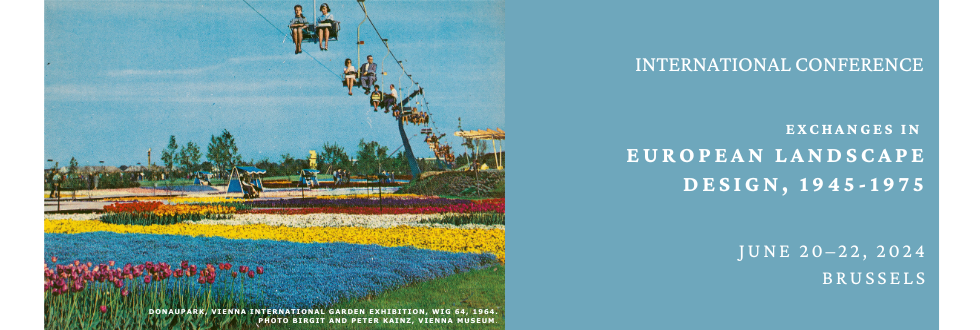
|
|
|
Abstracts > Lars Hopstock
Franco-German Relations in Landscape Architecture - Lars Hopstock (University of Kaiserslautern)
In 1960, only three years after the Saarland had changed status from French protectorate to federal state, Saarbrücken organized a unique project, the Franco-German Garden Show. Listed as a heritage site in 2001, and renovated more recently, the park is one of the most representative of its time. Its different areas were designed by a group of German and French landscape architects—among them Jacques Sgard—selected through competition by a prestigious international jury. The project’s origins raise interesting questions; officially a celebration of binational friendship, the park was created in a politically charged territory and just a stone's throw from various French sites dedicated to the memory of the Second World War, but also German sites memorializing the Franco-Prussian War of 1870/71. Economic incentives may also have played a role in the enthusiasm of those involved in organizing the garden show. In discussing this today little-known project, the presentation will look before and after 1960 to highlight some of the debates and events that demonstrate how the two nations were connected through landscape architecture in a relationship filled with vicissitudes.
Les relations franco-allemandes dans l'architecture du paysage
En 1960, trois ans seulement après que la Sarre passe du statut de protectorat français à celui d'État fédéral, la ville de Sarrebruck organise un projet inédit : le Jardin franco-allemand. Classé au patrimoine en 2001 et rénové plus récemment, le parc est l'un des plus représentatifs de son époque. Ses différents espaces ont été conçus par un groupe d'architectes paysagistes allemands et français - dont Jacques Sgard - sélectionnés sur concours par un jury international prestigieux. La genèse du projet soulève d'intéressantes questions : officiellement destiné à célébrer l'amitié binationale, le parc a été créé sur un territoire politiquement chargé, à deux pas de divers sites français dédiés à la mémoire de la Seconde Guerre mondiale, mais aussi de sites allemands commémorant la guerre franco-prussienne de 1870/71. Les incitations économiques ont peut-être également joué un rôle dans l'enthousiasme des personnes impliquées dans la réalisation du Jardin franco-allemand. En discutant de ce projet aujourd'hui peu connu, la présentation se penchera sur la période antérieure et postérieure à 1960 pour mettre en lumière certains débats et événements qui démontrent les liens entre les deux nations par le biais de l'architecture du paysage dans le cadre d'une relation pleine de vicissitudes.

Paul Mylo, Franco-German Garden Show, Exhibition catalog, 1960. p. 142.

